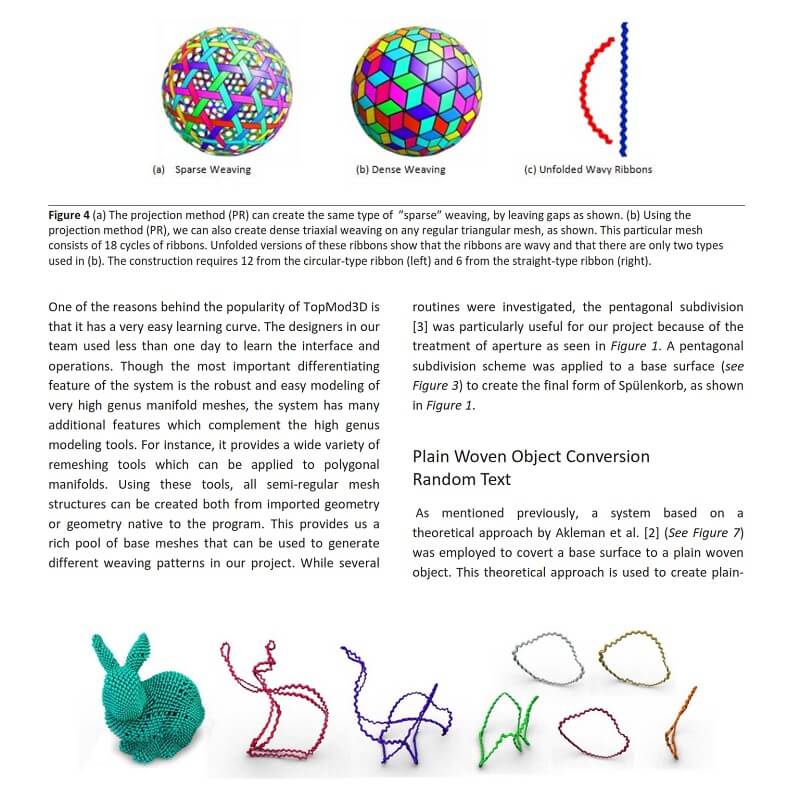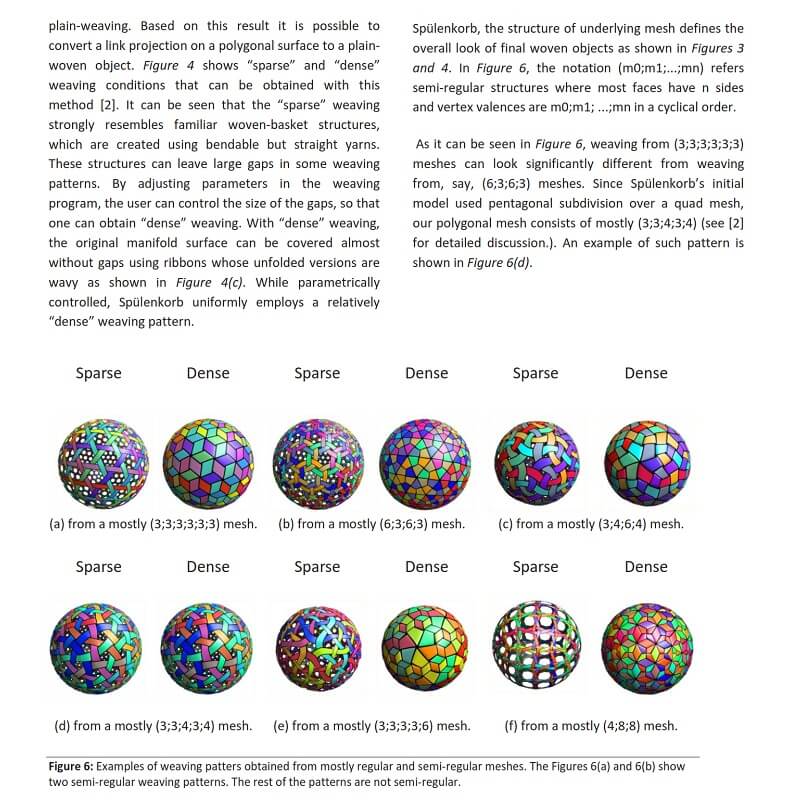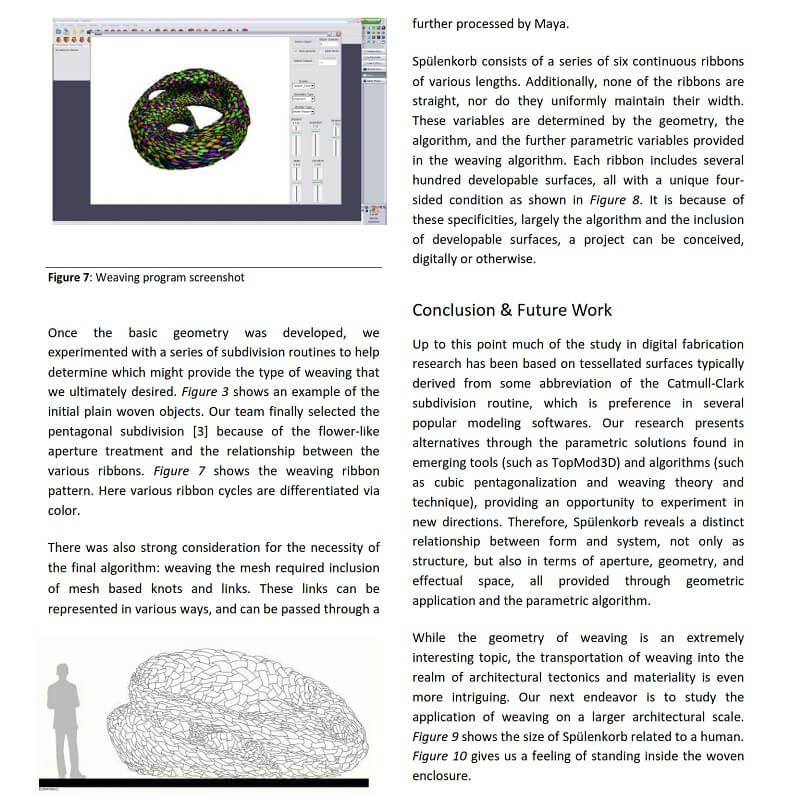Weaving Methods
Weaving Methods in
Architectural Design
Qing Xing1, Gabriel Esquivel2, Ryan Collier3, Michael Tomaso4, Ergun Akleman5
1Department of Visualization-Texas A&M University, 2Department of Architecture-Texas A&M University, 3Corgan Associates-Dallas,
4Corgan Associates-Dallas, 5Department of
Architecture-Texas A&M University

In an effort to investigate surface logics consisting of highly porous, irregularly defined weaving systems a series of investigative strategies were employed. This paper by Qing Xing, Gabriel Esquivel, Ryan Collier, Michael Tomaso and Ergun Akleman, discusses certain modes of research and their derivatives through a case study, Spülenkorb, as an entry into a digital fabrication competition by Texfab, in which the project received honorable mention.
 The initial form is conceived as a Möbius band, a geometrical variant of the pure mathematical “strip”. The base mesh of the initial form is developed using the software TopMod3D and Maya. This base mesh is then processed into a woven object using internally developed weaving software.
The initial form is conceived as a Möbius band, a geometrical variant of the pure mathematical “strip”. The base mesh of the initial form is developed using the software TopMod3D and Maya. This base mesh is then processed into a woven object using internally developed weaving software.
 Knots and links are interesting structures that are widely used for tying objects together and for creating interesting shapes such as woven baskets. To topologists, a knot is a 3D embedding of a circle and a link is a 3D embedding of more than one circle.
Knots and links are interesting structures that are widely used for tying objects together and for creating interesting shapes such as woven baskets. To topologists, a knot is a 3D embedding of a circle and a link is a 3D embedding of more than one circle.
 Authors prefer to use the general term link, since each component of a link is also a knot. Mathematical links can be used to represent weaving structures such as a fabric, a cloth, or a basket. While there are a wide variety of weaving methods, the most popular is plain-weaving, which consists of threads that are interlaced so that a traversal of each thread alternately goes over and under the other threads (or itself) as it crosses them.
Authors prefer to use the general term link, since each component of a link is also a knot. Mathematical links can be used to represent weaving structures such as a fabric, a cloth, or a basket. While there are a wide variety of weaving methods, the most popular is plain-weaving, which consists of threads that are interlaced so that a traversal of each thread alternately goes over and under the other threads (or itself) as it crosses them.





























Comments